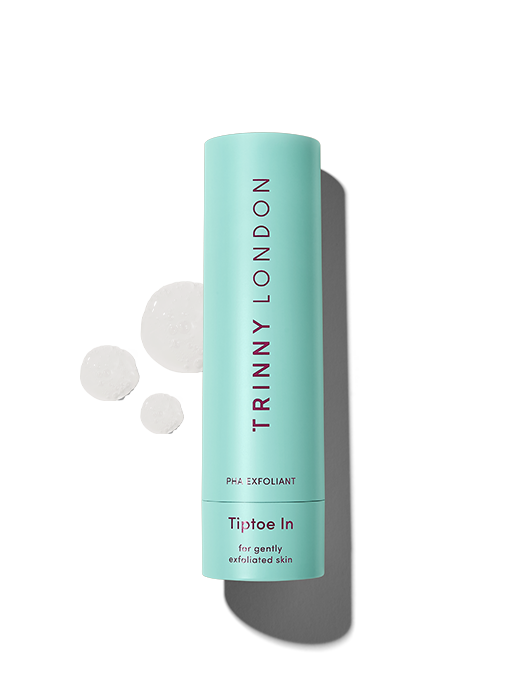
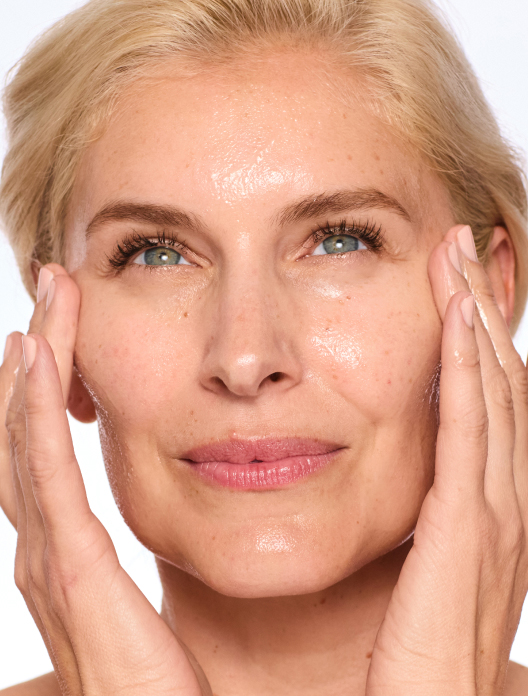
Tiptoe In
Kind-to-skin exfoliant for radiant skin, suitable for all skin types

We know, the word “acid” can sound a little scary. But if you’re imagining something you might find bubbling away in a chemistry lab, think again – in the skincare world, acids can be your skin’s best friends.
The first thing to remember is that not every skincare ingredient that we call an acid has the same properties. There are exfoliating acids – which you’ve probably already heard of – and then there are compounds that are called acids but behave differently, like ascorbic acid and hyaluronic acid.
When it comes to skincare, different acids can help you achieve different goals, from smoothing fine lines to fading pigmentation to balancing blemish-prone skin and much more.
Exfoliating acids
The most well-known of the bunch, exfoliating acids can be split into three main categories, each of which lift away the dead skin cells from the surface of your skin and leave you with a smoother, brighter complexion. Here’s the difference between the three:
Poly-hydroxy acids
The mildest category of exfoliating acids, PHAs gently buff away at the surface of the skin to provide light exfoliation, and are gentle enough to be used every day. The molecules found in PHAs are large, meaning they can’t penetrate too deeply into the skin and cause irritation – perfect for skincare beginners or sensitive skin.
Key ingredients to look for:
Gluconolactone, galactose and lactobionic acid are some of the top PHAs to keep on your radar.
Beta-hydroxy acids
Unlike the other two categories of exfoliants, beta-hydroxy acids are oil-soluble, making them saviours for oily, congested skin as they can penetrate the pores more easily. BHAs work to unclog pores (without stripping skin of its natural moisture), helping to balance skin and prevent breakouts.
Key ingredients to look for:
Salicylic acid is the most commonly used BHA, which you’ll find in products
formulated for oily skin.
Alpha-hydroxy acids
AHAs are the true superstars of the exfoliant world – thanks to their tiny molecule size, they are able to dive deep into the epidermis for strong exfoliation that will leave your skin smooth and glowing.
Key ingredients to look for:
Glycolic acid, lactic acid, mandelic acid and malic acid are some of the top names you’ll find in the most powerful exfoliants.
Hyaluronic acid
An acid by name, but not by nature, hyaluronic acid behaves very differently to its exfoliating cousins. It’s a humectant, which means it draws in and retains moisture like a sponge. In fact, this superstar hydrator can hold up to 1,000 times its weight in water, making it the perfect ingredient for keeping skin plump and smooth. Plus, it’s suitable for all skin types – even sensitive skin.
Ascorbic acid
This active ingredient goes by another name you’ve definitely heard before: vitamin C. This powerhouse antioxidant has been proven to brighten skin, even out pigmentation and tackle fine lines and wrinkles. Proceed with caution, though – if you’re new to skincare or have sensitive skin, you might want to start with a low percentage and build up your skin’s tolerance over time. There are a lot of different forms of vitamin C on the market for all skin types, so it’s just a case of finding the right one for you.
Suffering from dry skin can make you feel like you can’t be adventurous with your skincare – but as long as you choose wisely, there’s nothing stopping you from incorporating acids into your skincare routine.
Hyaluronic acid is the ultimate hero ingredient for dry complexions, quenching the skin with moisture and – more importantly – keeping it there. It also has the added benefit of making skin plumper and more glowy, which are often at the top of the wishlist for people with dry skin.
If it’s a liquid exfoliant you’re after, PHAs are a great place to start – they’re gentle enough for first-time users, and they act as moisture magnets that keep your skin hydrated. If you’re ready to go a step further, AHAs have similar properties but are able to give you a deeper exfoliation.
If you’re really nervous to try an exfoliating acid for the first time, your best option might be to try it in a wash-off gel cleanser, rather than a leave-on liquid exfoliant. This way, you’ll get an immediate glow without potentially irritating your skin by leaving the acid on overnight.
By now, you might have decided you’d like to include acids in your skincare routine – but how and when do you actually use them?
A liquid exfoliant should be the second step in your routine, after cleansing – a thoroughly clean canvas will help the exfoliant penetrate deeper into your skin and do a better job of cleaning your pores. A PHA exfoliant is gentle enough to be used in the morning, but if you have sensitive skin or you’re using a stronger formula, we recommend only exfoliating at night, and limiting it to a few nights a week rather than every day.
A hyaluronic acid serum should come after cleansing or exfoliating, and before your moisturiser – the first steps will help the serum do its best work, while the moisturiser will keep it sealed in so it can work harder for longer. And as hyaluronic doesn’t cause any irritation, you can use it as often as you like!
One crucial thing to remember when building your skincare routine is that you need to tailor it to your skin type. You might think you have dry skin, but people often confuse dehydration with dryness.
The difference is simple – dry skin lacks oil, while dehydrated skin lacks water. Dry skin is a skin type, and is something you will likely have suffered with your whole life; dehydrated skin, on the other hand, is a temporary condition caused by a lack of water, which can be brought on by factors such as diet or weather.
Bear in mind that it’s also possible for your skin to be both dry and dehydrated – but by nourishing your skin with skincare and looking after your body with plenty of water, you can combat both at once.
Your skin is always adapting to your environment – the key to curating the perfect skincare routine is to listen to your skin and adapt to its changing needs.
If your dryness isn’t too bad in the summer but gets worse in the winter, try a lightweight, energising moisturiser in the warmer months and switch to a thicker, more nourishing formula to keep your skin happy and hydrated in the cold.
A lot of people don’t exfoliate in the summer as they believe it can make their skin more sensitive to the sun. We asked Skin Expert and Pro Facialist, Fiona Brackenbury, for her advice:
“Your skin actually gets thicker in the summer to help protect you from UV rays, so exfoliation is still essential. The best way to exfoliate the skin is with a liquid exfoliant at night to avoid any potential irritation.”
Want to keep your skin nourished on a long-haul flight? Fiona has a top tip for that, too:
“Hyaluronic acid works by drawing in moisture from its surroundings. When you’re on a plane, there’s very little moisture in the air, so hyaluronic acid might end up taking moisture from deeper in your skin and making it feel dehydrated. If you do want to use hyaluronic acid on a flight, I recommend sealing it in with a thick moisturiser – you’ll step off the plane looking fresh-faced and glowy, jet lag or no jet lag.”
Shop the article


Kind-to-skin exfoliant for radiant skin, suitable for all skin types
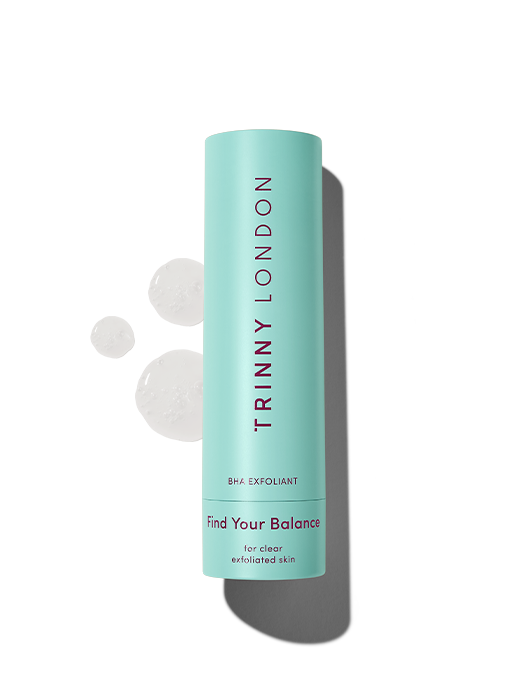
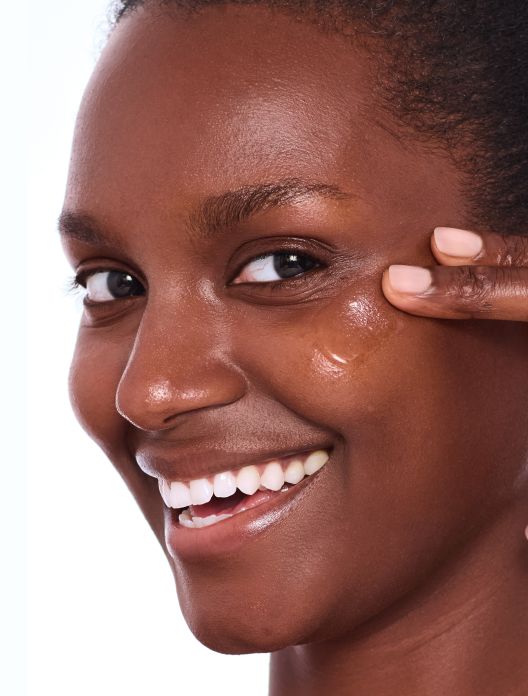
Clarifying complex to tackle blemishes
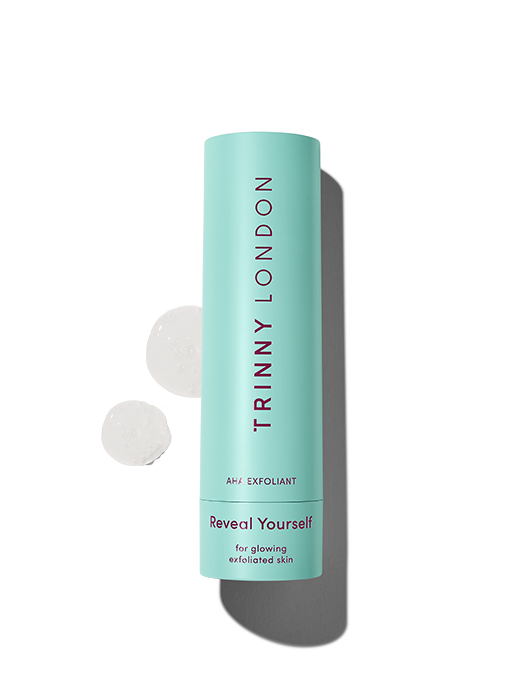

Highly active exfoliant for glowing skin, suitable for all skin types except sensitive
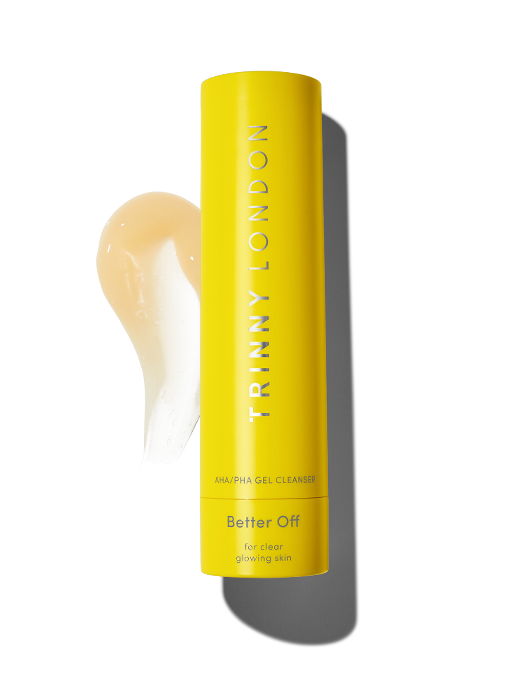
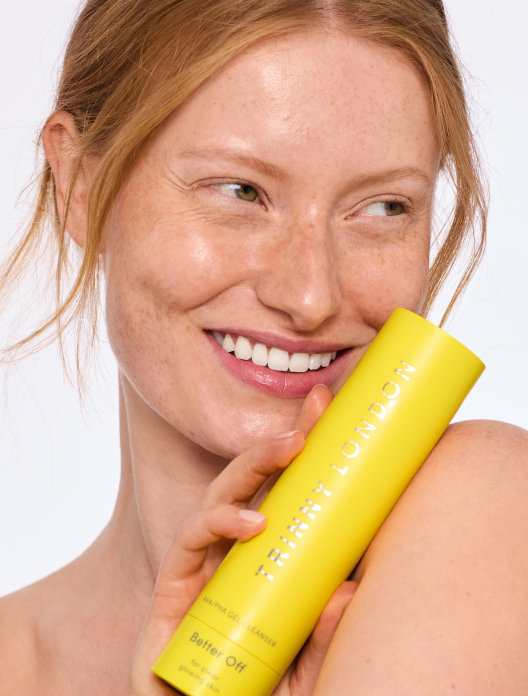
Exfoliating gel cleanser for clear, glowing skin, suitable for all skin types